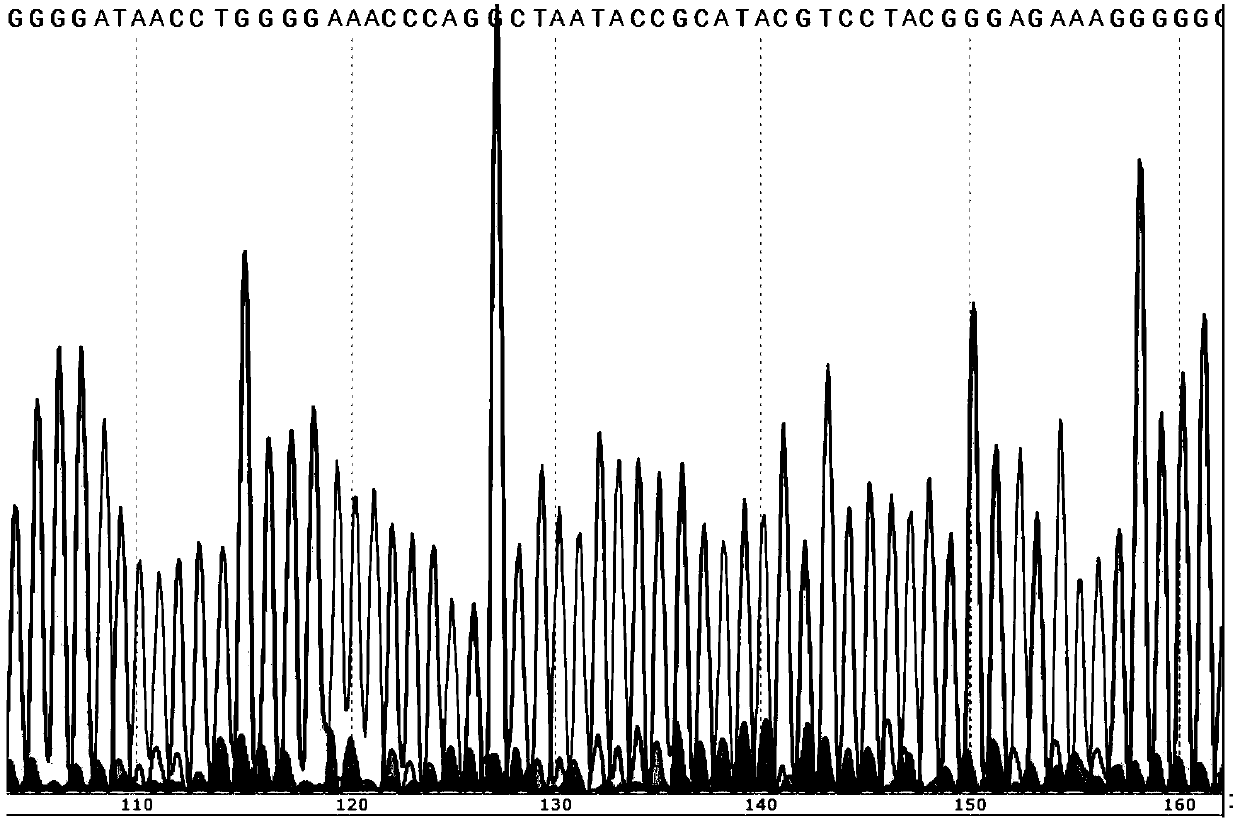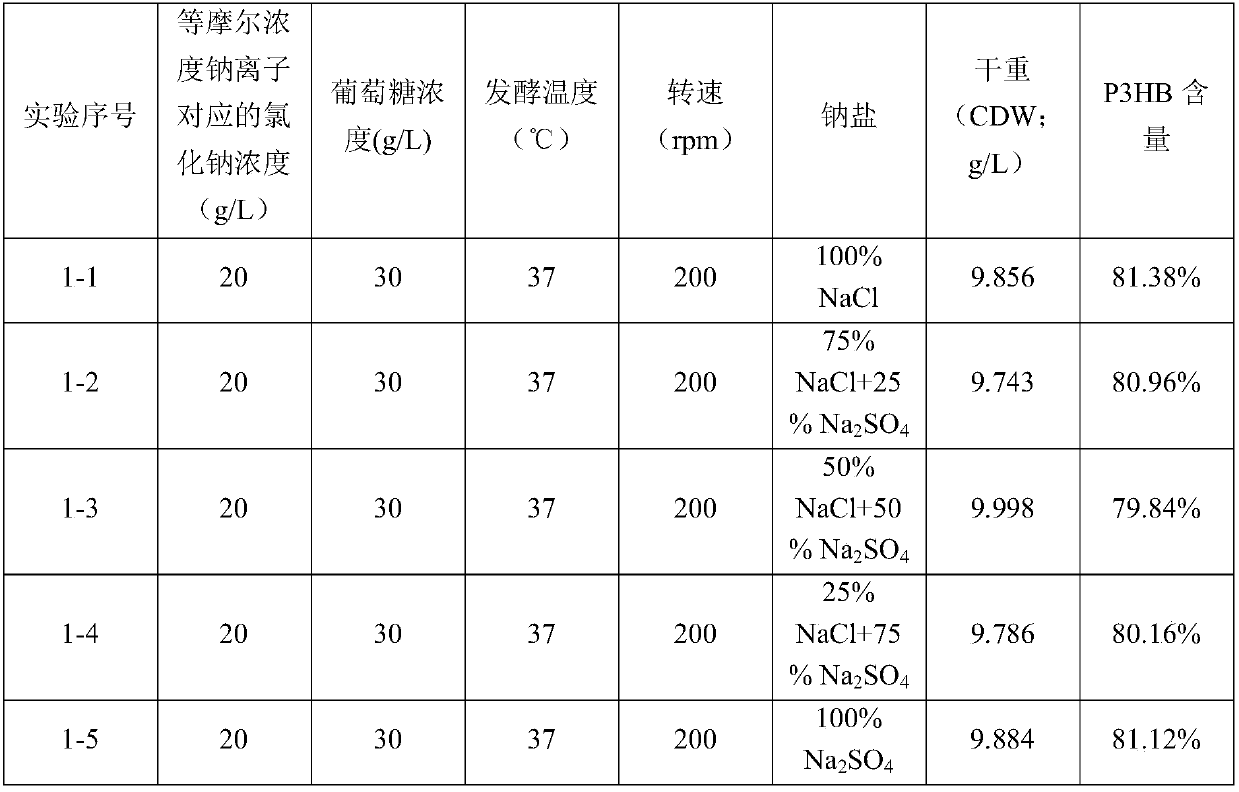Improved method for cultivating microorganisms
A technology of halophilic microorganisms and culture medium, which is applied in the field of improved culture of halophilic microorganisms, can solve the problems of reduced dry weight, slowed microbial growth, and no discovery, so as to reduce the concentration of chloride ions, reduce corrosion, and reduce bacterial contamination Effect
- Summary
- Abstract
- Description
- Claims
- Application Information
AI Technical Summary
Problems solved by technology
Method used
Image
Examples
Embodiment 1
[0058] Example 1. Using Na 2 SO 4 Mix NaCl as sodium salt for fermentation
[0059] In order to reduce the amount of NaCl used, the inventors tried to use NaCl 2 SO 4 Partially or completely replace NaCl to provide a suitable high-salinity environment. At the same time, the experiment using only NaCl as the sodium salt was used as a control. In this experiment, Halomonas bluephagenesis TD01 was used as a fermentation strain for fermentation culture, and the aforementioned MM medium was used as a basal medium, and sodium salt and glucose were added. The culture conditions are shown in Table 1, and shake flask experiments were used. Three parallel samples were set for each experiment, and the results were averaged. The experimental results are shown in Table 1 (wherein the percentage of sodium salt is the mass fraction).
[0060] Table 1:
[0061]
[0062] The results showed that when the NaCl used to provide a high-salinity environment was partially replaced with Na ...
Embodiment 2
[0063] Example 2. Using Na 2 SO 4 Alternative to NaCl as sodium salt for fermentation
[0064] Carry out experiment according to the material and condition described in embodiment 1, difference is to use only Na 2 SO 4 Instead of using NaCl as the sodium salt. Meanwhile, an experiment using only NaCl as the sodium salt was used as a control. Three parallel samples were set for each experiment, and the results were averaged. The results are shown in Table 2.
[0065] Table 2:
[0066]
[0067] The results showed that when NaCl used to provide a high-salinity environment was replaced with Na 2 SO 4 When replaced, the growth and product synthesis of TD01 bacteria were basically not affected. Thus, the corrosion effect of the fermentation system on the fermentation equipment caused by the presence of chloride ions can be reduced, and the concentration of chloride ions in the fermentation system can be reduced to facilitate subsequent wastewater treatment. Moreover, th...
Embodiment 3
[0068] Example 3. Using Na 3 PO 4 Alternative to NaCl as sodium salt for fermentation
[0069] Carry out experiment according to the material and condition described in embodiment 1, difference is to use Na 3 PO 4 Instead of NaCl as sodium salt for fermentation, Na 3 PO 4 The concentration is 55g / L (equivalent to the amount of Na ions provided by 60g / L NaCl).
[0070] The results proved that sodium phosphate can indeed replace sodium chloride for fermentation. The bacteria grew well and the PHA yield was comparable to that obtained when the fermentation was carried out with NaCl, in other words, with NaCl 3 PO 4 Substituting NaCl as sodium salt for fermentation can also reduce the corrosion effect of the fermentation system on the fermentation equipment caused by the presence of chloride ions without affecting the synthesis of the target product, and reduce the concentration of chloride ions in the fermentation system to facilitate subsequent wastewater treatment.
PUM
 Login to View More
Login to View More Abstract
Description
Claims
Application Information
 Login to View More
Login to View More - R&D
- Intellectual Property
- Life Sciences
- Materials
- Tech Scout
- Unparalleled Data Quality
- Higher Quality Content
- 60% Fewer Hallucinations
Browse by: Latest US Patents, China's latest patents, Technical Efficacy Thesaurus, Application Domain, Technology Topic, Popular Technical Reports.
© 2025 PatSnap. All rights reserved.Legal|Privacy policy|Modern Slavery Act Transparency Statement|Sitemap|About US| Contact US: help@patsnap.com



